Yosemite is a remarkable place with four distinct seasons, all of them amazing! The Park offers picture-perfect weather nearly 9 months a year. Most days are bright and sunny with cool, comfortable evenings. Note that since Rush Creek is at an elevation that is 600' higher than Yosemite Valley, the temperature tends to be a few degrees cooler. Please call the lodge at (209) 379-2606 if you need additional information about current or seasonal weather conditions.
Spring
Booming waterfalls and blooming wildflowersSpring is a time of transition with booming waterfalls and blooming wildflowers. This is when the snow melts away (though much more slowly in the High Country) and wildlife becomes more active. In late spring, Tioga Pass reopens allowing easy access to Tuolumne Meadows and the High Country and easy transit through Yosemite from the east. While spring weather is usually magnificent, it’s not unheard of for a late-season storm to bring snow in April or even May.
Summer
Consistent wonderful weather day after daySummer is glorious with warm temperatures even in the High Country. During summer months, we seldom see any rain – indeed, we’ve often gone months without precipitation. Days are warm, sometimes hot, and nights are almost always cool thanks to our dry climate. This consistent, wonderful weather is perfect for hiking, swimming, fishing, biking or just hanging out. Of course, summer brings more crowds with kids out of school, so the season requires some extra patience.
Fall
Quiet and cooler with colorful changing leavesFall is a quiet, gentle period with cooler temperatures, colorful changing leaves and fewer people. It offers mild, sunny days with cool nights, perfect for recreation and campfires. Like summer, autumn in Yosemite is dry – we seldom see rain before November or snow before December. While waterfalls have subsided, hiking is glorious with crowd free trails and comfortable daily high temperatures. For many travelers, fall is the best time to visit the Park.
Winter
Breathtaking winter scenaryWinter is our favorite time of year in Yosemite. In general, the pace is slower and visitors feel they have been presented with a wonderful gift. Typical conditions include glorious weather with sunny days and cool, crisp nights, flowing waterfalls, abundant snowfall at higher elevations and breathtaking winter scenery. While the Sierras get plenty of snow in the high country, Rush Creek, located at 4,600', generally has mild winter weather with limited snowfall and is easily accessible year-round.
Winter Driving Information
The road leading to the lodge is usually snow free and dry and is plowed as necessary (usually by mid-morning) after snowfalls. We recommend that you carry chains with you throughout the winter and be aware of icy spots that are difficult to see. It is also a good idea to keep warm, dry clothing and extra water in your vehicle. Road conditions can change quickly, so please drive carefully on all mountain roads.
Please note that at times there are chain restrictions as you enter Yosemite National Park. You are required to carry chains for your vehicle when you enter a chain control area, even if you have a 4-wheel drive vehicle. For the most current road conditions in Yosemite National Park, call (209) 372-0200, then select option 1 twice. Here is a list of explanations for the chain control codes used by the Park Service.
- R0 – No chains required
- R1 – Tire chains required for all vehicles unless they have snow tires
Chains are required for all vehicles unless they have snow tires – even 4-wheel drive vehicles without snow tires must use chains - R2 – Tire chains required for all vehicles unless they have snow tires and 4-wheel drive
Chains are required for all vehicles unless they have snow tires on all four wheels and the vehicle is engaged in 4-wheel drive. This applies to all 4-wheel drive passenger vehicles with an unladen weight of less than 6500 lbs - R3 – Tire chains required for ALL vehicles
Chains are required on all vehicles with no exceptions
Seasonal Closure of Tioga Pass
Please note that Tioga Pass, located on Route 120 on the EAST SIDE of Yosemite National Park (near the Nevada border) closes each winter. While closing and opening dates vary from year to year, Tioga Pass typically closes in mid to late November and reopens in mid-May. This closure does not affect travelers coming from the west (e.g. Bay Area, Los Angeles, Sacramento, etc.). During winter months, guests traveling from the east side of the Sierras will need to cross the mountains either north or south of the Park. You can use this link to see the history of opening and closing dates for the Tioga Road, and visit the National Park Service Current Conditions page for current status.
Average Weather Conditions in Yosemite Valley
(4000 ft / 1200 m)
| Month | High (°F/°C) | Low (°F/°C) | Precipitation (in/cm) |
|---|---|---|---|
| January | 49 / 9 | 26 / -3 | 6.2 / 15.7 |
| February | 55 / 13 | 28 / -2 | 6.1 / 15.5 |
| March | 59 / 15 | 31 / 0 | 5.2 / 13.2 |
| April | 65 / 18 | 35 / 2 | 3.0 / 7.6 |
| May | 73 / 23 | 42 / 5 | 1.3 / 3.3 |
| June | 82 / 28 | 48 / 9 | 0.7 / 1.8 |
| July | 90 / 32 | 54 / 12 | 0.4 / 1.0 |
| August | 90 / 32 | 53 / 11 | 0.3 / 0.8 |
| September | 87 / 30 | 47 / 8 | 0.9 / 2.3 |
| October | 74 / 23 | 39 / 4 | 2.1 / 5.3 |
| November | 58 / 14 | 31 / 0 | 5.5 / 14.0 |
| December | 48 / 9 | 26 / -3 | 5.6 / 14.2 |



